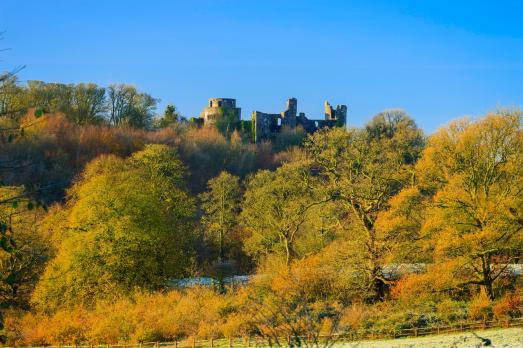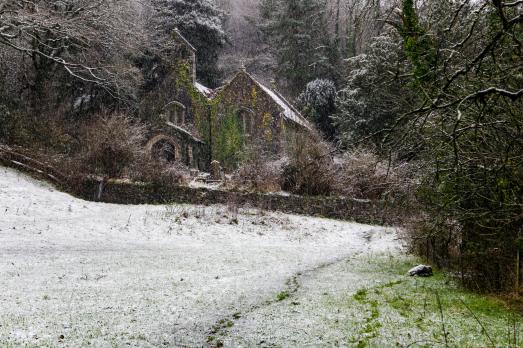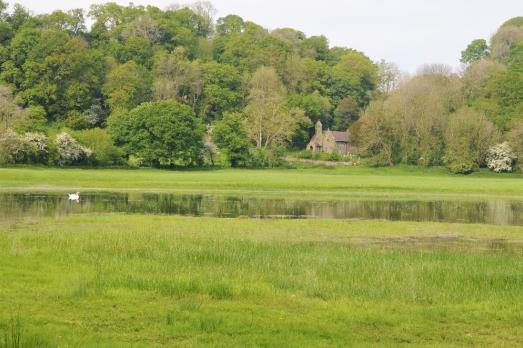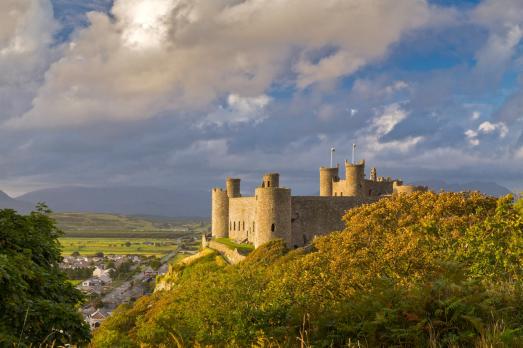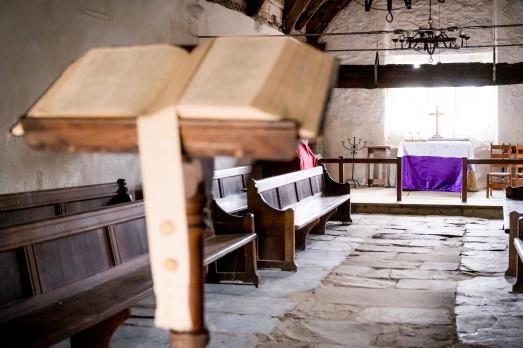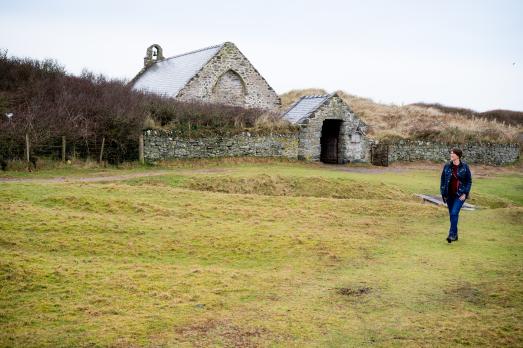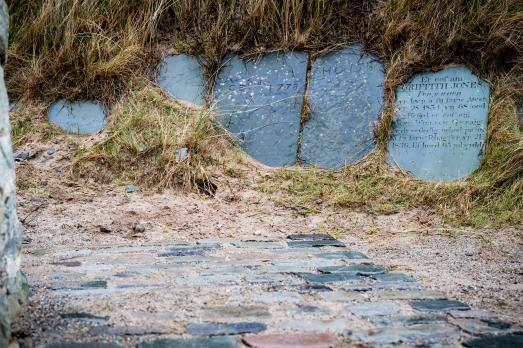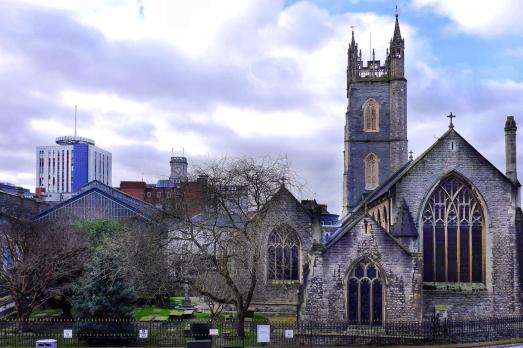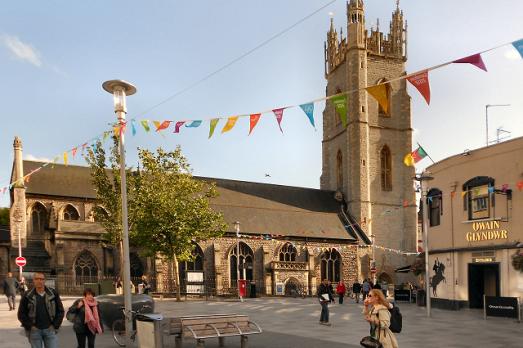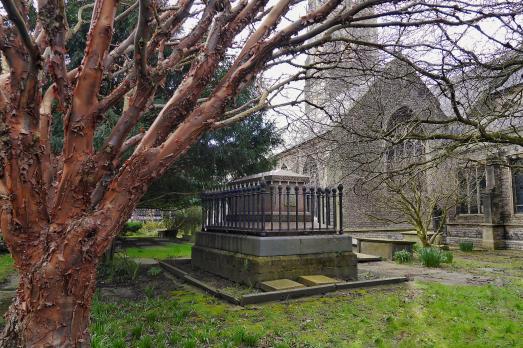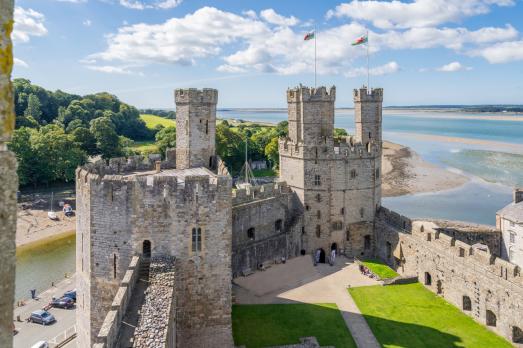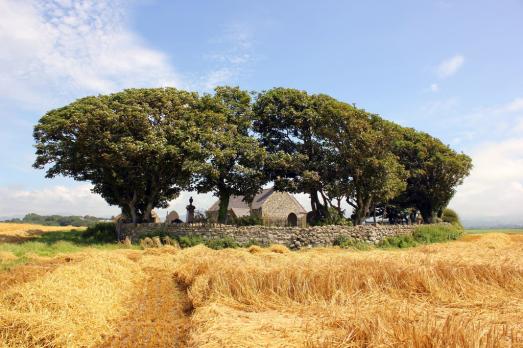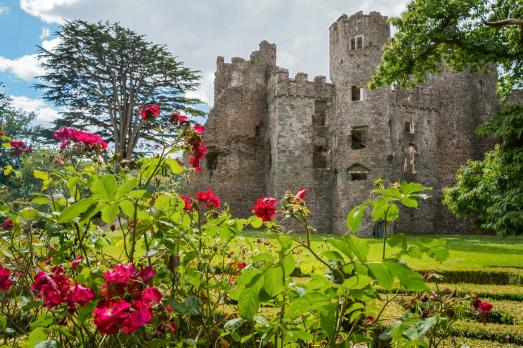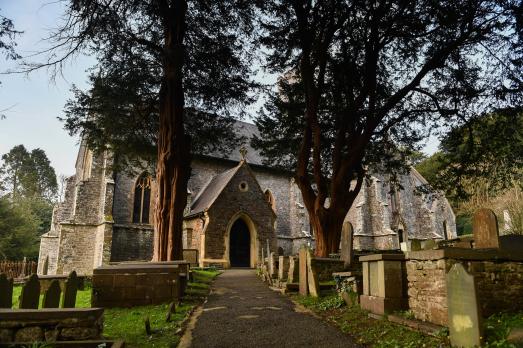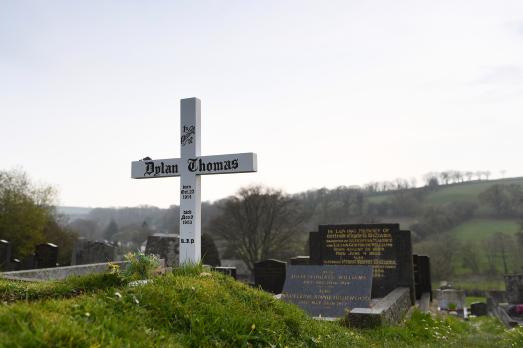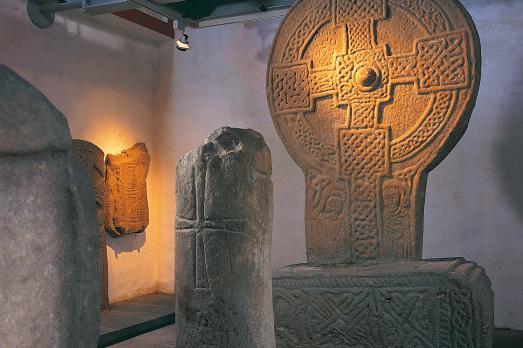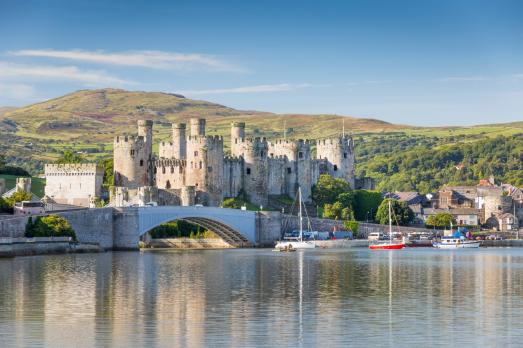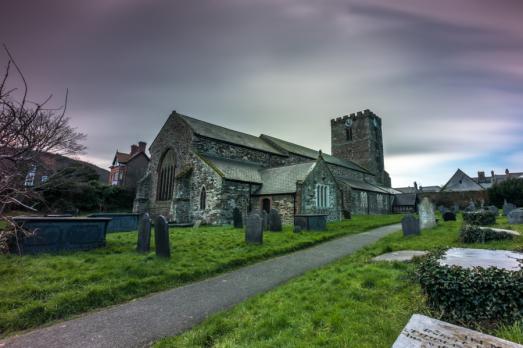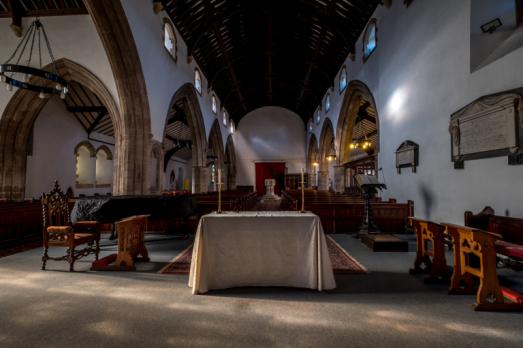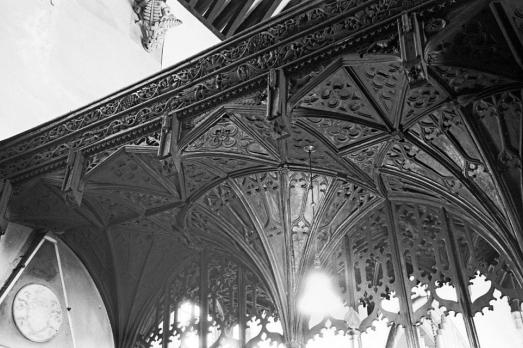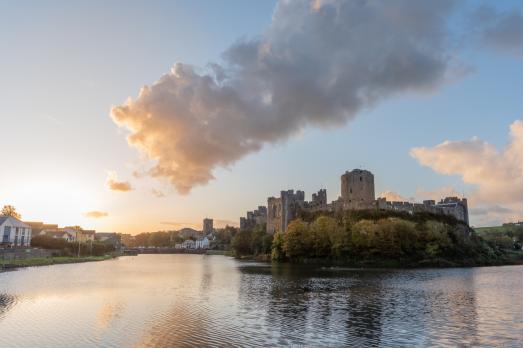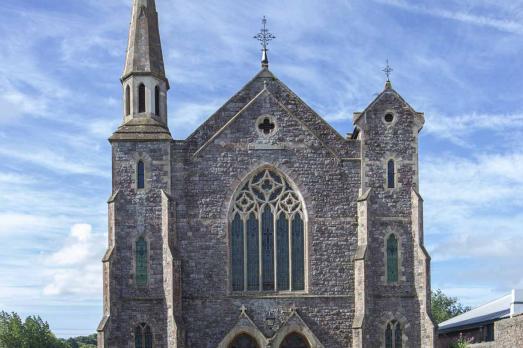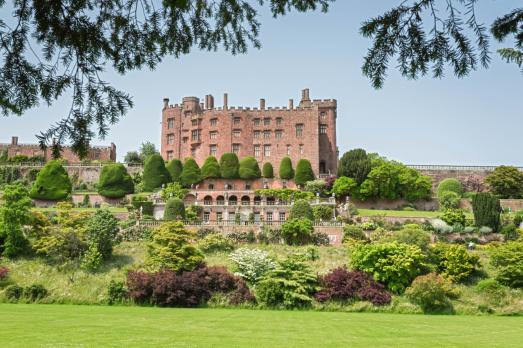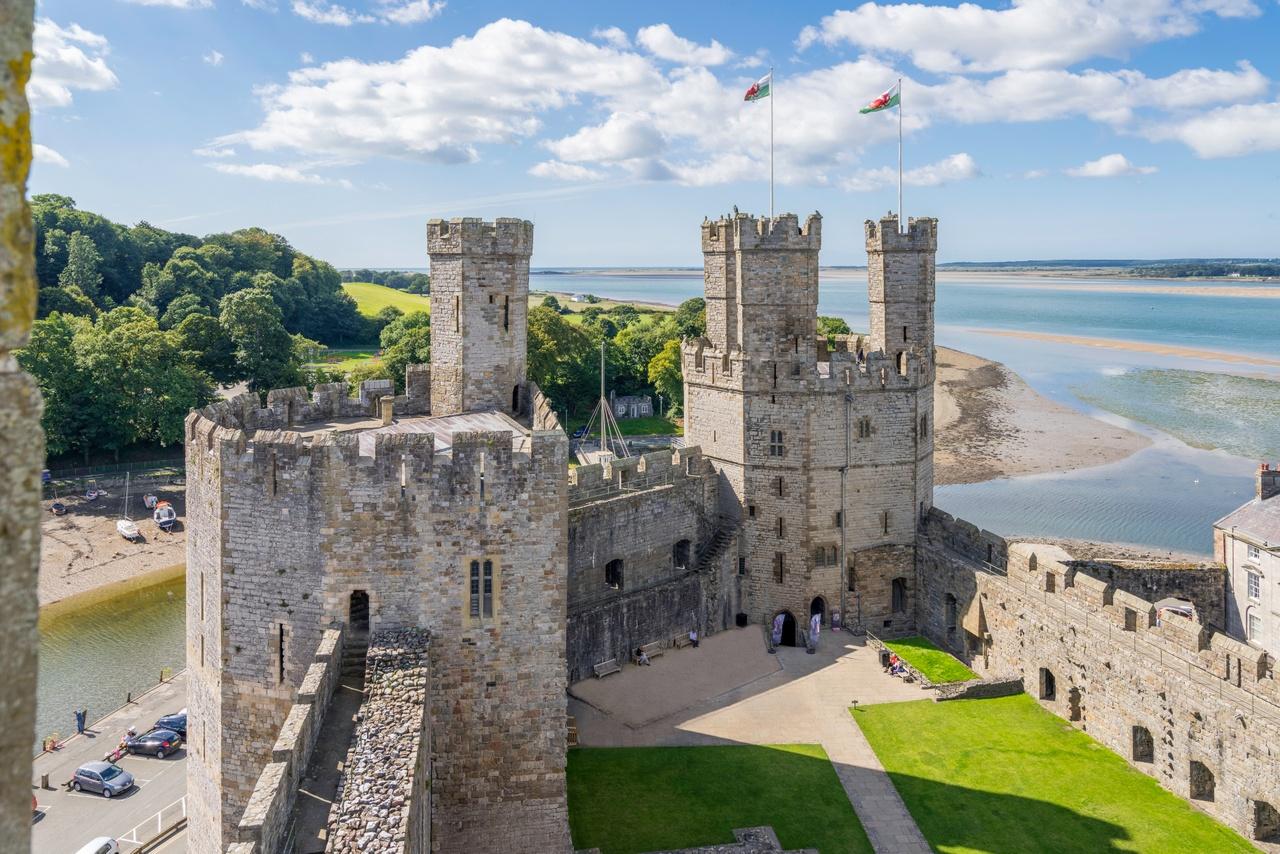
Caru dy gymydog
Welsh churches to rival the castle next door
by Caroline Welch, Church Support Officer Wales
Wales is said to be the castle capital of the world, with more castles per square mile than any other country. But what many people don’t know is that our churches are even older than our castles.
These are places where people witnessed the Norman invasion, where 5th century saints were lured by the landscape, where holy wells sprung up and crowds gathered in awe. They are the final resting place of heroes and poets, places to pause and reflect; a breathing space in a busy city. These are the buildings that have shaped us, that have witnessed all life for millennia. Usually the oldest building in an town or village by centuries, churches are full of stories, and can rival any castle for mystery, intrigue and atmosphere.
So once you’ve explored the castle, get away from the crowds and make a beeline for the church.
Here’s our top picks to get you started.
Dinefwr Castle : Old Church
an instagrammers dream
Nestled in a sleepy hollow in the bountiful Tywi Valley, picturesque Llandyfeisant church is an photographers dream. Designed as an eye catcher in the landscape, this is a truly secret place, surrounded by overgrown woodland and the bumps and hummocks of an ancient churchyard crowded with gravestones.
Known as the ‘butlers church’, Llandyfeisant is the estate church of nearby Newton House, at Dinefwr. The castle itself, high up on the hill, was said to have been built by Rhodri the Great, the principal seat of Hywel Da, king of most of Wales. From here there are soaring views along the valley and beyond.
So after you’ve hiked up to the castle, and taken in the stunning views of the valley, cut back through Castle Woods to the church and take a moment to savour this very special sacred space.
Harlech Castle : St Tanwg
a tiny church founded before Edward I built the castle
In its spectacular setting on a rocky crag overlooking Cardigan bay, with the snow caped peaks of Snowdonia behind it, Harlech draws many a visitor off the coast road to admire it. But there’s a tiny church nearby that was founded way before Edward I invaded in 1282 and built Harlech.
St Tanwg was established in the 5th century. And, that’s not just hearsay, there’s quite a few inscribed stones inside to prove it. St Tanwg was the brother of St Baglan, son of Ithel the Generous of ‘Armorica’, from the Gaulish ‘at the sea’ / ‘ar y mor’. No surprise then that his son chose this perfect seaside spot to pitch his church.
Inside St Tanwg’s is the church that time forgot; its whitewashed walls undulating with age and its massive arch braced roof five hundred years old and counting. Outside, though much of the churchyard is lost to the sand dunes, lies the grave of the poet Sion Phillips, a contemporary of Shakespeare, who lived at nearby Shell Island and drowned whilst crossing from Shell Island to Llandanwg in 1620. Don’t try that at home!
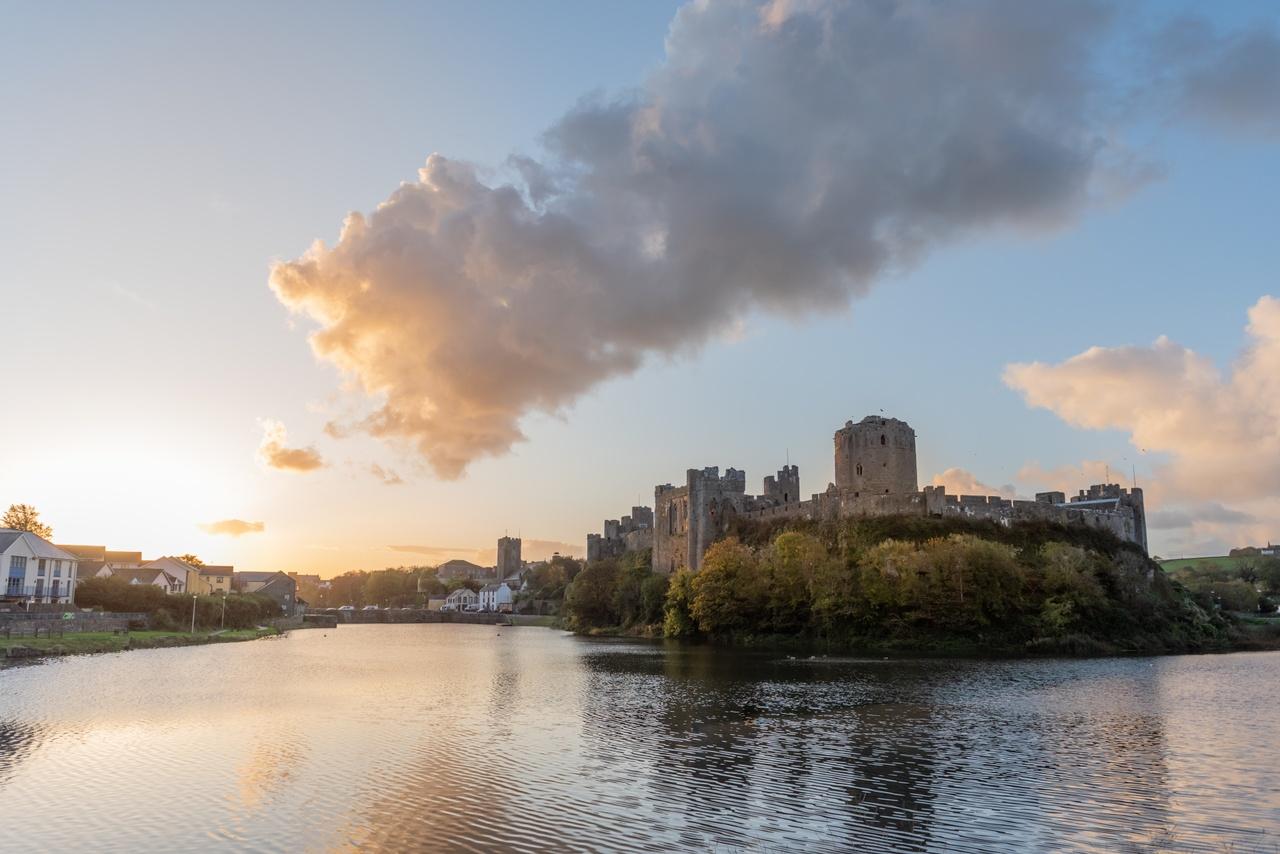
©CrownCopyright2020
Cardiff Castle : St John the Baptist
a haven of peace in the heart of the city
Right in the centre of our capital city, Cardiff Castle is unbeatable for its fairytale towers and over the top interiors. But, three minutes walk away, is a building that’s been there since the 12th century and offers a very different kind of experience.
St John the Baptist is a haven of peace in a bustling metropolis, its massive 130ft tower proclaiming its presence like a beacon. Step inside and pause for a moment, enjoy the silence. Then notice the Burma Star window, created in 1986 in memory of all who died in Burma in WWII: ‘When you go home, tell them of us and say, for your tomorrow, we gave our today’.
St John’s was attacked during Owain Glyndŵr’s uprising in 1404, was rebuilt in the 15th century and is still open daily.
Caenarfon Castle : St Baglan
the wilder the weather the better
Edward I built Conwy, Beaumaris and Harlech. With picture perfect Caernarfon, they now form one of Wales most iconic World Heritage Sites.
Take a road trip down the Coastal Way (otherwise known as the A478), turn right at the sign for Llanfaglan, and prepare to be transported to another world. The wilder the weather the better!
Yr hen egwlys Llanfaglan has stood here since the 13th century, and is preserved as if the villagers left it 500 years ago, complete with box pews and pulpit. Closed for regular worship, today it is cared for by local people and the Friends of Friendless Churches.
There are no friends here today, only the spirits of those long gone. This is a place where, in the colder months, people say they can touch the ‘thin place’, the gap between our world and another. Sit for a while and drink in the atmosphere before seeking out the ‘pirates’ grave outside.
Laugharne Castle : St Martin
don’t miss the Bone House
Thousands of people flock to Laugharne each year on the trail of Dylan Thomas. The majestic castle of 1116, nestling in the Tâf estuary, has witnessed the comings and goings of this picturesque little place, its shops and pubs the inspiration for ‘Under Milk Wood’, ever since. But how many people make the pilgrimage along the high street, to St Martin’s, to where the poet himself was laid to rest?
St Martin’s is a gem of a church, rebuilt by Sir Guy de Brian the 6th in the 14th century, on a much earlier site, as the 9th century Celtic cross just inside the church testifies. Don’t miss the Bone House, a gabled storehouse on the south side thought to be a medieval charnel house. After you’ve scoured the huge, steep and rambling churchyard, with its crumbling tombs, vaults and ancient gnarled yew trees, it’s a bit of surprise to discover Dylan’s final resting place is a simple white cross.
From here there’s a neat circular walk on footpaths to the estuary of the Tâf, Thomas's 'heron priested shore', down to the Boathouse Museum, where he lived, on to the castle and back up the village street.
Conwy Castle : St Mary
built by the first Prince of Wales in 1190
You can spot St Mary from the towers of Conwy castle, but did you know this church is older still?
Founded as Aberconwy Abbey by Llywelyn Fawr, the first Prince of Wales in 1190, building work at St Mary’s ended in the 15th century. It’s been here ever since, gathering museum quality monuments and stained glass, with tales from the churchyard to stir your soul. Check out the medieval carved rood screen, designed to give an air of mystery to the sacred chancel beyond, then seek out the table grave to the five babies of Richard and Martha Jones, all tragically lost to illness between 1829 and 1849.
Locals will tell you about William Wordsworth, whose chance meeting with an 8 year old girl here in 1798 and her strange, calm acceptance of death, inspired him to write ‘We are Seven’. Two of her siblings are now ‘at sea’ and two ‘in the churchyard lie’, although he never found out quite where the others had got to. This walled town has many surprises, and St Mary’s is one of them.
Pembroke Castle : Tabernacle URC
Tabernacle tells the story of Pembroke
The birthplace of Henry Tudor, the small inner bailey at Pembroke Castle was built by the Normans in 1093, on a rocky promontory overlooking Milford Haven. The rest of this mighty castle followed in the 12th and 13th centuries. It’s also built over a cavern, so what churches nearby could rival it?
Well, just a short walk down Main Street is the Tabernacle United Reformed Church. A mere youngster by comparison to the castle, it was erected in 1811 by minister architect Revd Thomas Thomas. And although we love its curious stone frontage and elegant plaster and panelled interior, designed to focus all eyes and ears on the words of the minister, this building has another story to tell.
The Tabernacle garden behind, with stunning views across The Commons features a cliff, a cave (with resident badger and bat), a 17th century lime kiln and its garden walls which are in fact the medieval town wall of Pembroke itself. In the process of being renovated to provide a serene green space, the garden will be linked to the Tabernacle by a staircase illustrating the history of Pembroke’s people through the ages. How apt that a church designed around the word of God should now tell the story of this ancient place.
Powis Castle : St Aelhaiarn
Welsh for ‘iron eyebrows’
Castles and powerful landscapes go hand in hand. Perhaps that’s why we love them so much. But Powis takes this a step further, with its immaculate terraced gardens, and views to die for. However unlike Harlech, Conwy and Caernarfon, Powis was built by a Welshman, called Gruffydd ap Gwenwynwyn, from 1283.
After you’ve marvelled at the gardens and the castle interiors, take a drive ten minutes or so up the road, and head for the picture perfect church of St Aelhaiarn, Welsh for ‘iron eyebrows’, at Guilsfield. This church was also founded by the son of a Welsh prince, but 100 years earlier than Powis. Its square tower with slender pyramid top, set among ancient trees, is well worth a trip off the beaten track.
This wasn’t always a quiet backwater. In fact the holy well at St Aelhaiarn’s was an important stop off for 14th century pilgrims on their way to Bardsey Island, popular for the miraculous cures bestowed by its bubbling or ‘laughing’ water as it was known. Sadly after an outbreak of diptheria in 1900 the local council closed the well and it remains locked away.
Now look closely at the church walls, they are said to date from the 12th century. And the roof? That’s 600 years old. How does it span 25 feet without any support? While you’re looking up, you can’t fail to marvel at the panelled Tudor roof. There are 240 panels here, with 312 painted bosses at the intersections, they all seem to be a different design. This church, like so many, is a work of art.
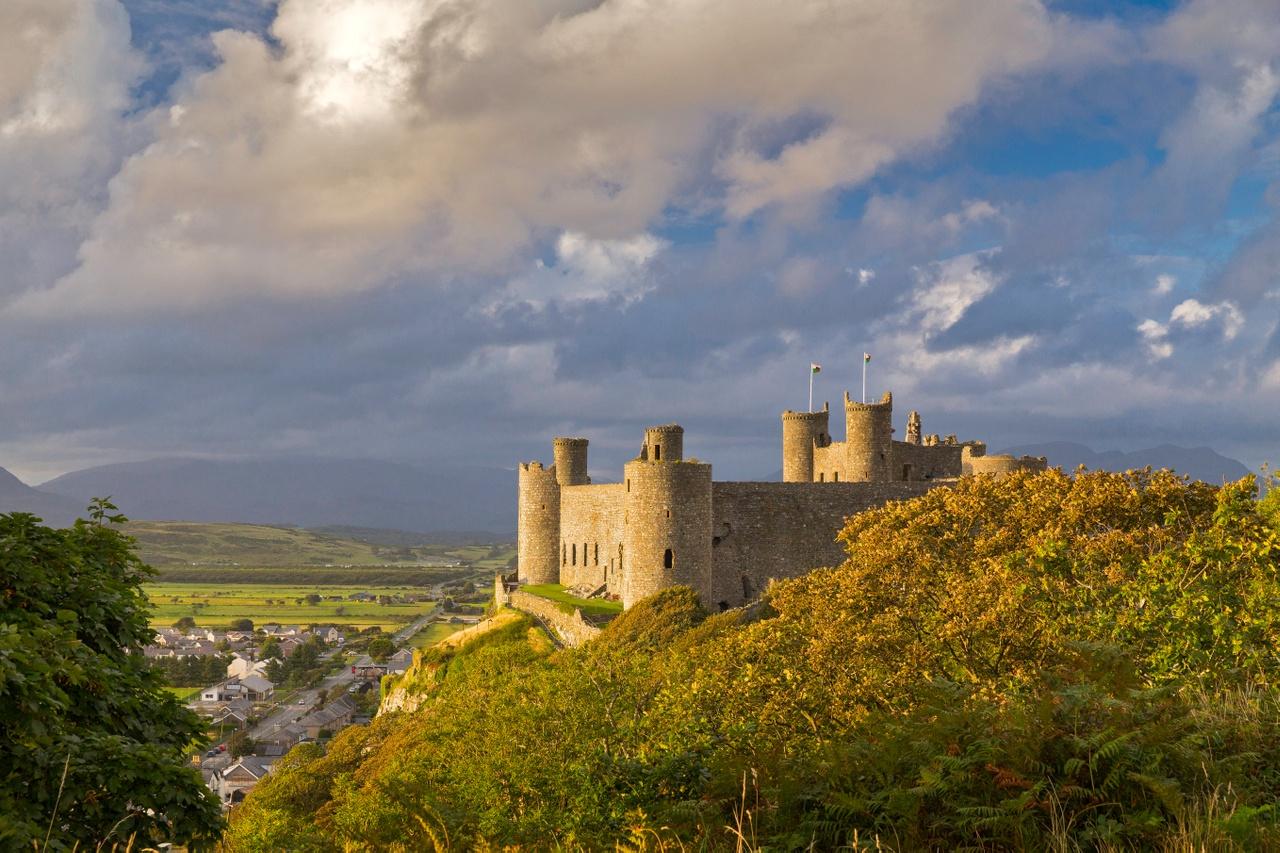
©CrownCopyright2020

